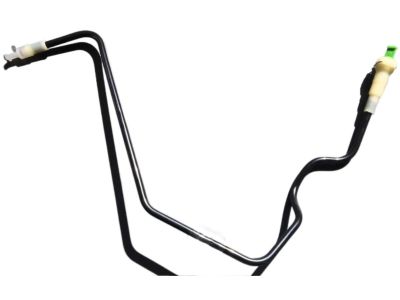×
- Hello
- Login or Register
- Quick Links
- Live Chat
- Track Order
- Parts Availability
- RMA
- Help Center
- Contact Us
- Shop for
- Nissan Parts
- Nissan Accessories

My Garage
My Account
Cart
Genuine Nissan Juke Hydraulic Hose
Brake Hydraulic Line- Select Vehicle by Model
- Select Vehicle by VIN
Select Vehicle by Model
orMake
Model
Year
Select Vehicle by VIN
For the most accurate results, select vehicle by your VIN (Vehicle Identification Number).
8 Hydraulic Hoses found

Nissan Juke Tube Assy-Clutch
Part Number: 30850-BC30A$53.28 MSRP: $73.45You Save: $20.17 (28%)Ships in 1-3 Business Days
Nissan Juke Hose Brake Rear
Part Number: 46210-1KD0B$66.50 MSRP: $96.32You Save: $29.82 (31%)Ships in 1-3 Business DaysNissan Juke Hose Assembly-Brake, Rear
Part Number: 46210-CY01C$30.21 MSRP: $43.75You Save: $13.54 (31%)Ships in 1-3 Business DaysNissan Juke Hose Brake Rear
Part Number: 46210-CY01B$30.40 MSRP: $44.02You Save: $13.62 (31%)Ships in 1-3 Business DaysNissan Juke Tube Assy-Clutch
Part Number: 30851-3YW0A$71.15 MSRP: $100.45You Save: $29.30 (30%)Ships in 1-2 Business DaysNissan Juke Hose Brake Rear
Part Number: 46214-1KA0A$50.49 MSRP: $73.12You Save: $22.63 (31%)Ships in 1-3 Business Days
Nissan Juke Hydraulic Hose
If you need any OEM Nissan Juke Hydraulic Hose, feel free to choose them out of our huge selection of genuine Nissan Juke Hydraulic Hose. All our parts are offered at unbeatable prices and are supported by the manufacturer's warranty. In addition, we offer quick shipping to have your parts delivered to your door step in a matter of days.
Nissan Juke Hydraulic Hose Parts Questions & Experts Answers
- Q: How do you properly disconnect, renew, and refit a hydraulic hose, ensuring minimal fluid loss and preventing contamination in the hydraulic system on Nissan Juke?A:Before starting work, be aware of the dangers of hydraulic fluid. If any pipe or hose needs renewal, minimize fluid loss by first removing the master cylinder reservoir cap and then tightening the cap onto a piece of polythene for an airtight seal. Alternatively, flexible hoses can be sealed using a brake hose clamp, while metal brake pipe unions can be plugged or capped immediately after disconnection, taking care to prevent dirt from entering the system. Place a wad of rag under any union to catch spilled fluid. When disconnecting a flexible hose, unscrew the brake pipe union nut before removing the spring clip that secures the hose to its mounting bracket. To unscrew the union nuts, it is advisable to use a brake pipe spanner of the correct size, available at most large motor accessory shops; if unavailable, a close-fitting open-ended spanner may be used, though care must be taken to avoid rounding off the flats of tight or corroded nuts. In such cases, a self-locking wrench may be necessary, but the damaged nuts and pipe must be renewed upon reassembly. Always clean the union and surrounding area before disconnecting, and if disconnecting a component with multiple unions, make a careful note of the connections. For renewing a brake pipe, it can be obtained cut to length with union nuts and end flares from Nissan dealers, or most motor accessory shops can create brake pipes from kits, requiring precise measurement of the original. When refitting, do not over-tighten the union nuts, as brute force is unnecessary for a sound joint. Ensure that pipes and hoses are correctly routed without kinks and secured in the provided clips or brackets. After fitting, remove the polythene from the reservoir, bleed the hydraulic system, wash off any spilled fluid, and check carefully for leaks.















